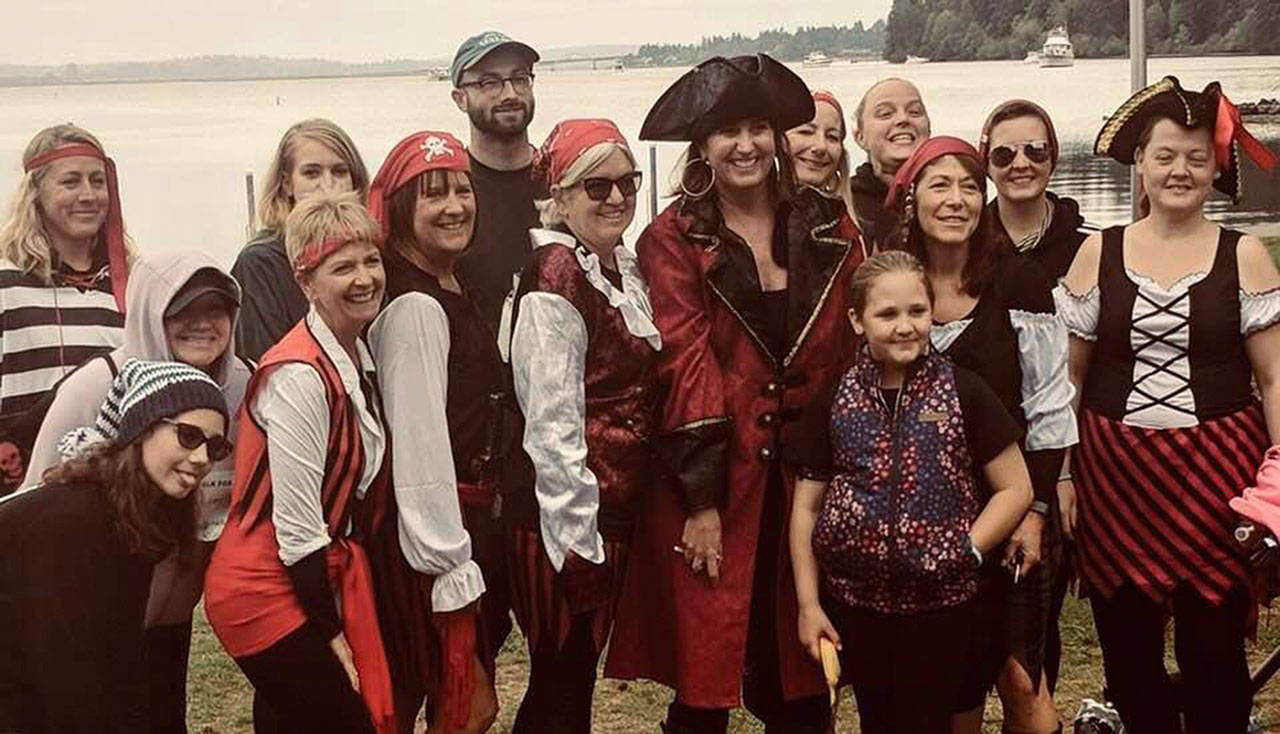If it wasn’t for weekly plasma donations, Enumclaw local Tricia Foerster would not be alive today.
Because of a rare autoimmune disease that creates severe muscle weakness, Foerster needed a constant supply of new plasma introduced to her body, not unlike why a dialysis patient needs new blood.
But it wasn’t just plasma she needed — it was immunoglobulin, the part of the plasma that contains antibodies.
That immunoglobulin, or Ig, can’t just be transferred from a donor to a receiver at a one to one ratio, though: it takes at least 1,000 plasma donors, and as many as 15,000, just to create one batch.
And Foerster needed at least one batch of Ig per week for five years.
She’s on a new treatment now that requires far fewer plasma donations, but remains keenly aware of how she and countless other Americans are in dire need of blood and plasma, from those with similar autoimmune diseases to cancer patients and car crash victims.
That’s why Foerster and Heather Invie, owner of The Garage on Enumclaw’s Cole Street, are promoting a special blood and plasma drive with Bloodworks Northwest on June 15, from 9 a.m. to 3 p.m. The Bloodmobile will either be in front of the gym or on the corner of Cole and Stevenson.
Invie met Foerster when she pulled the gym owner aside to talk about her disease, Myasthenia gravis, about a year ago.
“She came to the garage to get strong while she was battling MG. We clicked instantly and now we’re good friends,” Invie said, adding that she and many other Garage members are now a part of Seattle’s annual MG walk every September.
It was around the time Foerster had to switch treatments that Invie realized she could do something to help on a larger scale than just donating her own blood, which she started doing after her mother had a fatal reaction to her chemo treatment and needed an immediate blood transfusion.
“[Giving blood] is so easy to do,” she said. “It doesn’t take any time to do it, and the huge impact on other people’s lives, I just don’t think people are aware of that.”
This won’t be the only blood drive The Garage helps organize — Invie aims to help host one at least every two months, which is about the length of time it takes people to recover and give more blood.
BLOOD SHORTAGES AND STATISTICS
Summer is a hard month for blood drives, said nonprofit Bloodworks Northwest media specialist John Yeager, “because high schools are out for the summer and we get close to 20 percent of our blood supply from high school blood drives.”
Overall, less than 38 percent of people are able to donate blood and plasma, but only around 3 percent (about 6.8 million) of people actually donate every year, according to the Red Cross.
That’s roughly 7 million pints, or units, of blood donated yearly, just over half of the estimated 13 million units needed in the U.S. on an annual basis.
And that’s just for red blood cell donations — more than 2.5 million units of platelets, what helps blood clot to stop up injuries, and 3.6 million units of plasma are needed annually as well.
Bloodworks Northwest itself needs 900 units of blood a day “just to keep up with demand from the 100 hospitals we serve from Southeast Alaska to Southern Oregon,” Yeager said.
Time is also a key factor when it comes to donating blood, and blood providers can quickly deplete their stores during emergency situations: red blood cells must be used in about 42 days, and platelets must be used within just 5 days.
As of late May, Bloodworks Northwest’s website said the nonprofit is currently experiencing “emergency levels” of A-negative, B-negative, O-negative, and O-positive blood types and platelets.
The most requested blood type by hospitals is O for two reasons, the Red Cross’ website reads: O-negative blood is the “universal” blood type, meaning anyone can receive it during a transfusion, making this blood type perfect for emergency situations when a patient’s blood type is unknown; and O-positive is the most common blood type in the U.S. (38 percent of people have it) and is also compatible with all other positive blood types.
Type AB-positive plasma is also often hard to come by, because it can be transferred to patients of all blood types. However, only about 3 percent of the U.S. population has AB-positive blood and plasma.
MAKING IT EASY TO DONATE
If you can’t donate on June 14, which happens to be National Blood Donor Day, or during the next day’s event, it’s easy to find another day to donate, Yeager said.
Bloodworks Northwest has a mobile app that allows users to schedule appointments. To download the app, text “bloodapp” to 91985 and follow the prompts.
“Millennials told us the main reason they don’t donate is they don’t know how and they don’t know where to donate,” Yeager said. “Our app addresses both concerns. When you download the Bloodworks mobile app it tells you where the nearest donation center or Bloodmobile is to your location on a given time and date.”
According to the Red Cross, donating blood only takes about eight to 10 minutes, depending on the person, but the whole process — which includes registration and a mini physical — takes a little more than an hour.
Donating platelets or plasma can take up to two hours.


